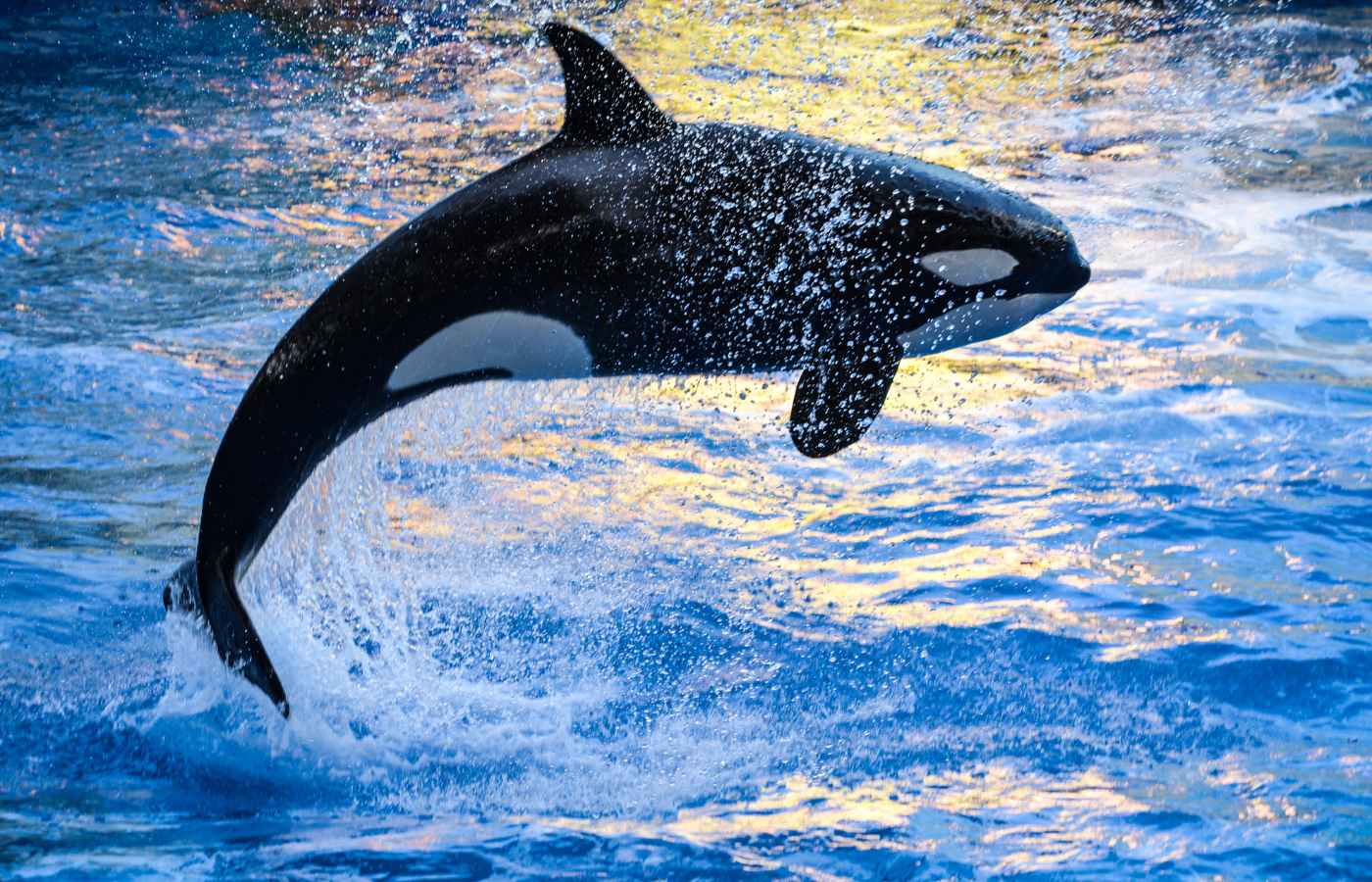Attention all young marine biologists and curious kids! Are you ready for a whale of a good time?
Look no further, because we have 100 jaw-dropping whale facts that will blow your mind.
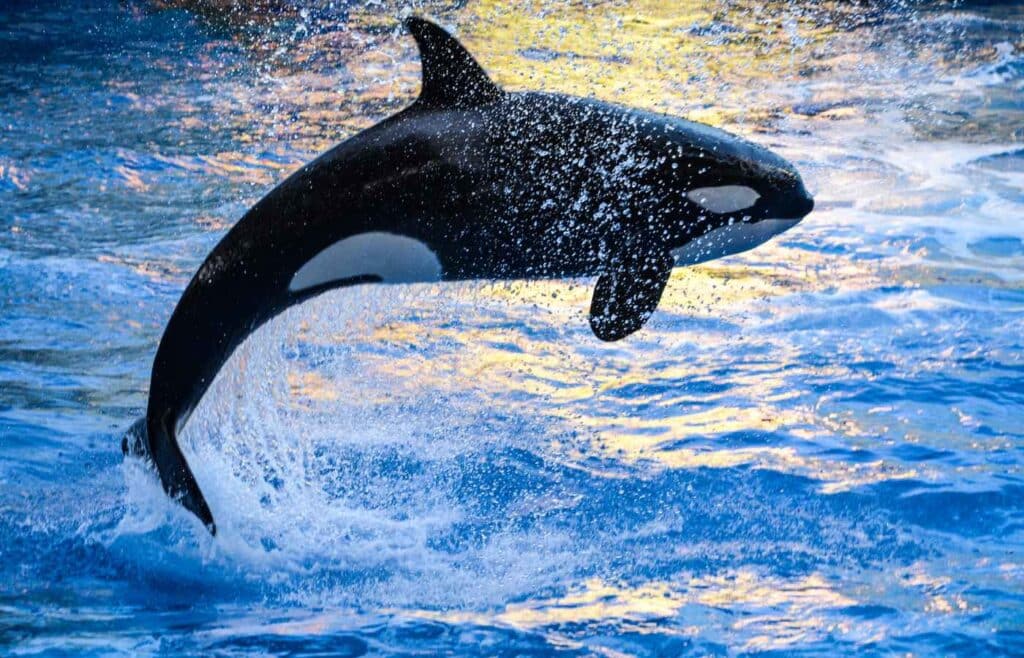
Did you know that some whales can live over 200 years, or that their hearts can weigh as much as a car? Or how about the fact that blue whales can communicate with each other from up to 1,000 miles away?
Whether you’re planning a family trip to the beach or just looking for some fun educational activities, these fun facts are sure to make a splash with your little ones. So grab your sea legs and let’s dive in!
Size
Here are some surprising facts about these incredibly large animals:
1. The blue whale is the largest animal on Earth, growing up to 100 feet (30 meters) long and weighing as much as 200 tons.
2. A blue whale is the largest whale and can weigh as much as 33 elephants!
3. The heart of the blue whale, which is the largest animal on Earth, can weigh as much as 1,000 pounds (450 kg) and be as large as a small car.
4. The smallest whale is the dwarf sperm whale, which grows to be only about 9 feet (2.7 meters) long.
5. The humpback whale’s flippers can be up to one-third of its body length, which helps it to maneuver in the water.
6. The sperm whale’s head is the largest of any animal, making up one-third of its body length. It also has the largest brain of any animal, weighing up to 18 pounds (8 kilograms).
7. The fin whale, also known as the “razorback whale,” has a distinctive dorsal fin that can grow up to 6 feet (1.8 meters) tall.
8. The sei whale is that it is one of the fastest whales in the ocean, reaching speeds of up to 30 miles per hour (48 km/h). This is especially impressive because the sei whale is one of the larger species of baleen whale growing up to 64 feet (19.5 meters) long and weighing up to 66,000 pounds (30,000 kg).
But even the fastest whale can’t compete with the cheetah, the fastest land animal. Find out more in Cheetah Facts for Kids.
Lifespan
1. Bowhead whales are the longest-living mammal on Earth, with some individuals living over 200 years!
2. Other whale species, such as humpback whales and killer whales, have also been known to live for several decades in the wild, with some individuals living into their 80s and 90s.
Species
1. There are 90 species of whales, dolphins, and porpoises which are all known as cetaceans.
2. Of these species, there are two suborders: Mysticeti, which includes 14 species of baleen whales, and Odontoceti, which includes 76 types of whales, dolphins, and porpoises.
Blowhole
Here are some interesting facts about one of the whale’s most defining features – its blowhole:
1. A whale’s blowhole is a specialized nostril located on the top of their head.
2. Unlike human nostrils, which are separate, a whale’s blowhole is a single opening that connects directly to the animal’s lungs.
3. Some whales can hold their breath for over an hour, depending on their size and activity level.
4. When a whale exhales through its blowhole, it can create a spout of water and mist that can reach heights of up to 30 feet (9 meters).
5 .Different species of whales have different shaped blowholes – for example, a humpback whale has two blowholes that are separated, while a gray whale has a single blowhole that is V-shaped.
6. A whale’s blowhole is covered by a muscular flap called a “valve” that helps to prevent water from entering the animal’s lungs when it is submerged.
7. When a whale inhales through its blowhole, it can take in up to 90% of the air in its lungs in just one breath.
8. In order to breathe through its blowhole, a whale must first close off its mouth and throat using special muscles.
9. Scientists can use the shape and size of a whale’s blowhole to help identify the species of whale they are observing.
10. A whale’s blowhole can become clogged with debris, such as plastic and fishing nets, which can cause health problems and even death for the animal.
Blubber
1. Whale blubber is a thick layer of fat that helps to keep whales warm in cold water.
2. Blubber can make up as much as 50% of a whale’s body weight.
3. Some whale species, like the blue whale, can have blubber that is over a foot (30 cm) thick.
4. The color of whale blubber can vary depending on the species and the individual, ranging from white to yellow to brown.
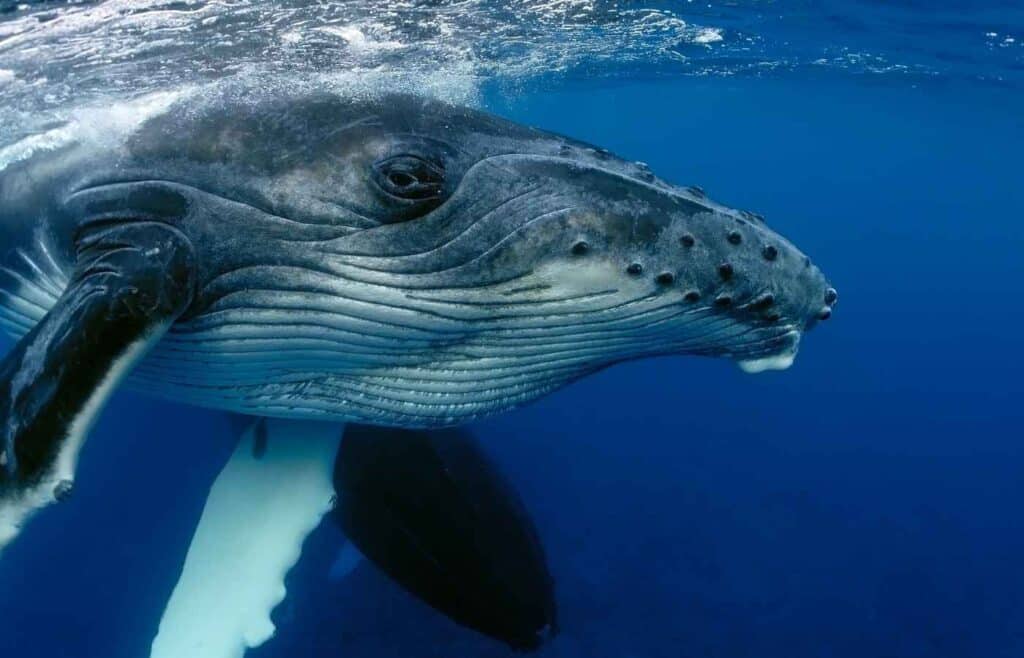
5. The blubber of some whale species, like the bowhead whale, can be over a foot (30 cm) thick and has been known to sustain people living in the Arctic in times of scarcity.
6. Whale blubber is full of nutrients and can be a source of food for many marine creatures, including humans.
7. The Inuit people have traditionally used whale blubber for food, fuel, and even as a material for clothing and shelter.
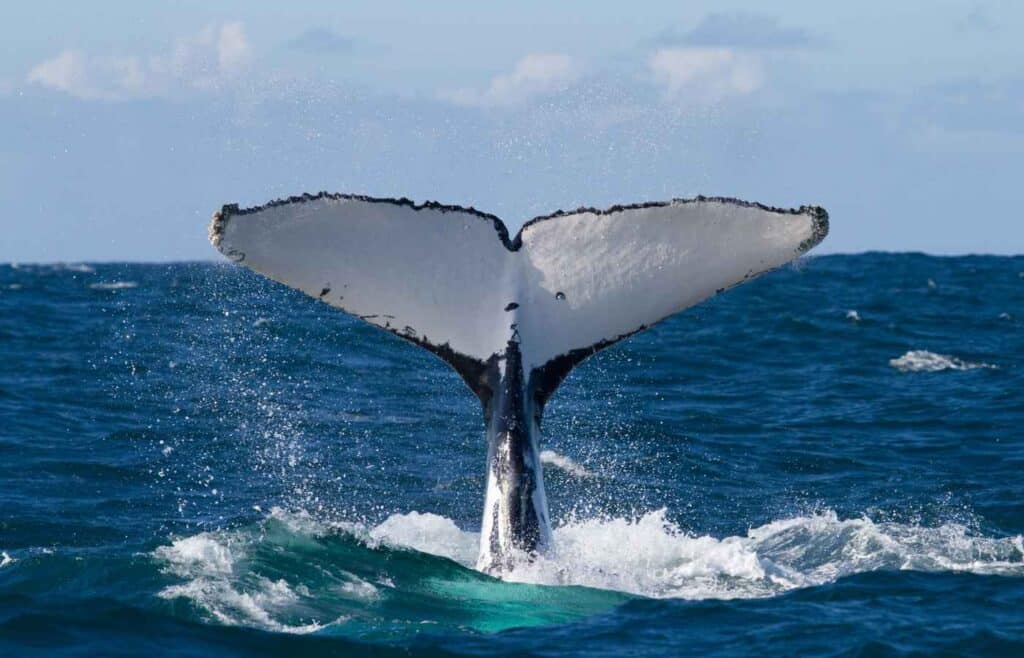
8. Whale blubber is so thick that it can actually be used as a flotation device.
9. The blubber layer of a whale can help to protect it from injury, as it acts as a cushion against blows and impacts.
10. The bowhead whale has the thickest blubber of any animal, which can be over 1.5 feet (0.5 meters) thick, helping it to stay warm in the cold Arctic waters.
Just like whales use blubber for insulation, emperor penguins rely on thick layers of fat and feathers to survive in icy waters. Learn more in Emperor Penguin Facts for Kids.
Intelligence
Do you think whales are as smart as humans? Here are some surprising facts about the intelligence of these magnificent animals:
1. Whales are incredibly intelligent creatures and have the largest brain of any animal on earth.
2. The brain of a sperm whale can weigh up to 18 pounds (8 kg).
3. Many whale species have been observed using tools, such as using sponges to protect their noses while foraging on the ocean floor.
4. Some whale species, such as killer whales, have complex social structures and are capable of forming lifelong bonds with family members.
5. Humpback whales have been observed working together to create “bubble nets” to trap schools of fish for easier feeding.
6. Some whale species have been observed exhibiting empathy and helping injured or distressed individuals in their pod.
7. Researchers have observed humpback whales singing a complex whale song that can last for hours, and may even vary from year to year.
8. Orcas, also known as killer whales, are highly intelligent and have been observed hunting in coordinated packs to take down much larger prey such as blue whales.
9. Researchers have observed some whale species exhibiting self-awareness, such as recognizing themselves in mirrors.
Whales aren’t the only smart animals in the ocean—bottlenose dolphins are known for their problem-solving skills and communication abilities. Read more in Bottlenose Dolphin Facts for Kids.
10 Studies have shown that whales have highly developed emotional centers in their brains, and may even experience emotions such as joy, grief, and anger.
11. Whales have a unique brain structure where only one half of their brain sleeps at a time while the other half stays awake to help them breathe and keep an eye out for predators. This is called “unihemispheric sleep,” and it allows whales and other marine mammals to rest while still being able to swim and surface for air.
12. Like humans, whales have been observed engaging in playful behavior and showing affection towards one another. For example, humpback whales have been known to breach (jump out of the water) and slap their fins on the surface of the water as a form of play.
13. Whales have been observed showing compassion towards other species. For example, there have been instances where dolphins have been seen helping injured whales by supporting them at the water’s surface so they can breathe.
Elephants also have enormous brains and display remarkable intelligence. Discover more in Elephant Facts for Kids.
Communication
1. All toothed whales have a “melon” on their forehead. It’s a mass of tissue that they use to communicate through echolocation.
2. Sperm whales have a unique dialect of “clicks” that they use to communicate with one another. Each pod of sperm whales has its own dialect, which is passed down from generation to generation.
3. Humpback whale songs are among the most complex vocalizations of any animal on earth.
4. Male whales sing to attract mates, and their mating songs can last up to 20 minutes and be repeated for hours at a time.
5. Each male humpback whale has its own unique song, which can be heard from miles away.
6. Researchers believe that humpback whale songs may also serve a social purpose, helping whales within a pod to recognize one another and stay together.
7. Blue whales, the largest animals on earth, produce some of the loudest sounds of any animal on earth. Their songs can reach volumes of up to 188 decibels, which is louder than a jet engine.
8. Different whale species produce different types of vocalizations, including songs, clicks, whistles, and grunts.
9. Sperm whales produce a series of clicks known as “codas,” which they use to communicate with one another. Each sperm whale pod has its own unique coda, which is thought to help individual whales recognize each other.
10. Some whale species, such as orcas, have dialects within their vocalizations that vary from region to region.
11 .Researchers are still studying why whales sing, and what purposes their vocalizations serve beyond communication and mating.
12. The beluga whale is known as the “sea canary” because of its melodic vocalizations, which can range from whistles and chirps to squawks and trills.
Whales aren’t the only animals with sophisticated communication skills. Monkeys use a variety of calls, gestures, and even facial expressions to communicate. Learn more in Monkey Facts for Kids.
Habitat
1. Whales can be found in every ocean on Earth, from the Arctic to the Antarctic.
2. Some whale species, like humpback whales, migrate long distances every year, traveling from the cold waters near the poles to warmer waters near the equator.
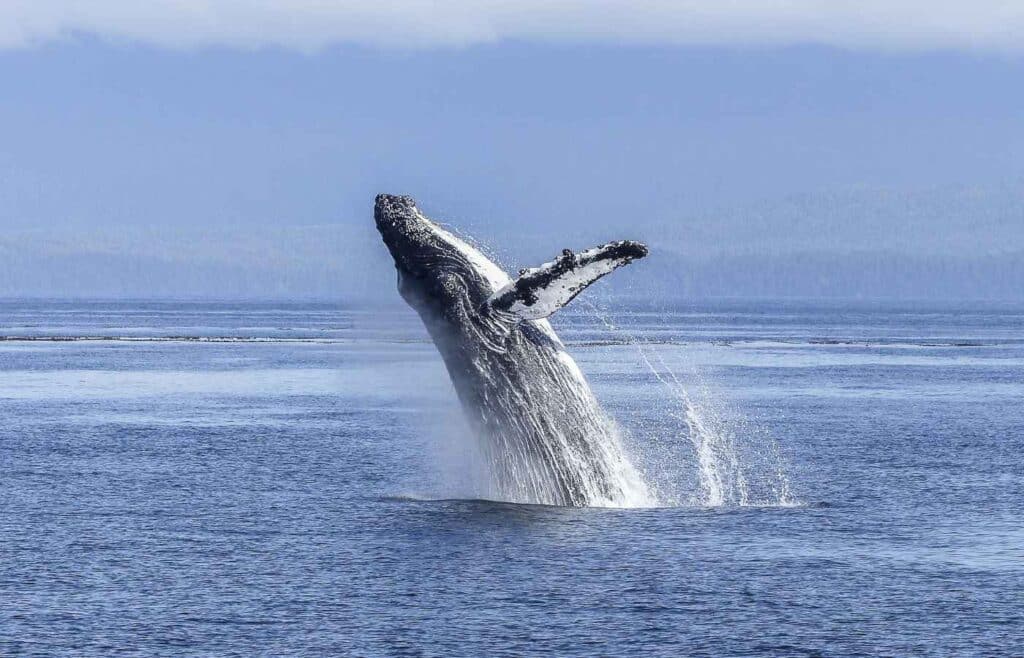
3. A group of whales is called a “pod”.
4. Pods can be small groups of a few individual whales or larger pods of several dozen.
5. Some whale species, like the beluga whale, can live in freshwater as well as saltwater.
6. Many whale species are apex predators, which means they are at the top of the food chain in their habitat.
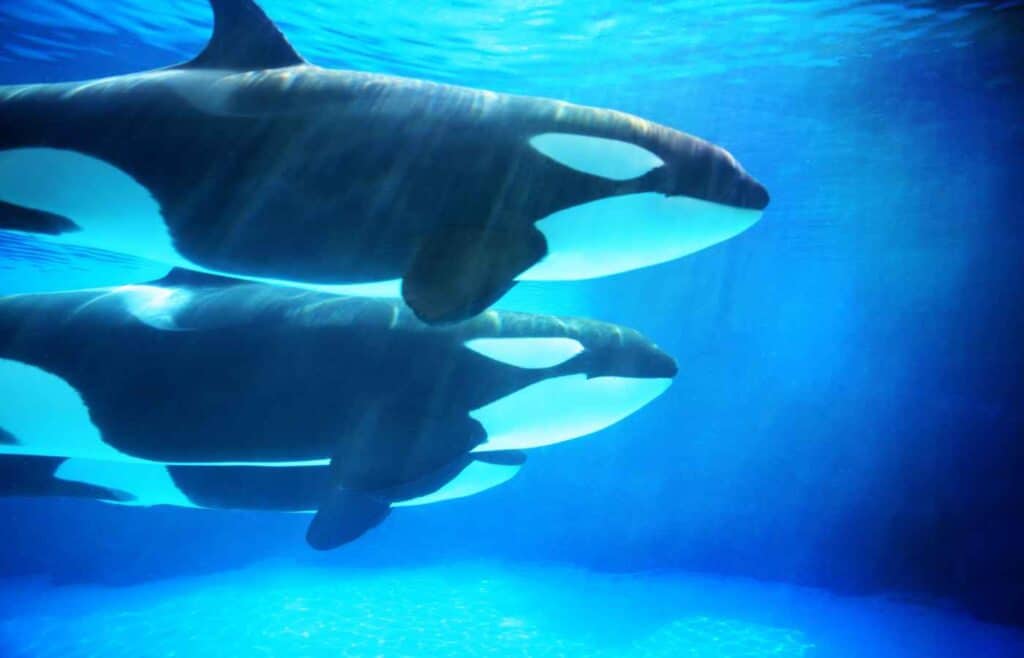
7. The gray whale migrates over 10,000 miles (16,000 kilometers) each year, making it one of the longest migrations of any mammal.
8. Whales can dive to incredible depths – the deepest recorded dive for a whale was by a Cuvier’s beaked whale, which dove to a depth of over 9,800 feet (2,992 meters).
Many sea creatures share these vast ocean habitats, including sea turtles, which migrate thousands of miles through the world’s waters. Explore their journey in Sea Turtle Facts for Kids.
Diet
1. Baleen whales do not have teeth. Instead, they have baleen plates that are comb-like structures. As baleen whales swim with their mouths open, water and small organisms such as krill or plankton flow in. The whale then closes its mouth and pushes the water out through the baleen plates, which trap the food inside. The whale can then use its tongue to scrape the food off the plates and swallow it.
Sharks, on the other hand, are apex predators that rely on sharp teeth to hunt their prey. Discover more in Shark Facts for Kids.
2. Baleen plates can be very long! In fact, some baleen plates can be longer than a school bus. For example, the baleen plates in the mouth of a blue whale can be up to 10 feet long (3 meters).

3. Baleen plates are made of the same material as human hair and nails. The plates are made of keratin, a tough, flexible protein that is also found in human hair, nails, and skin.
4. Some baleen whales can consume up to 3,000 pounds (1,360 kg) of food per day!
5. Toothed whales, like orcas and sperm whales, are apex predators and feed on a variety of prey, including fish, squid, seals, and even other whales.
6. Humpback whales use a feeding behavior called “bubble netting,” where they blow a circle of bubbles around a school of fish to trap them, then swim up through the middle with their mouths open to catch them. )
7. Sperm whales are known to dive to incredible depths in search of their favorite prey, giant squid. They can hold their breath for up to 90 minutes and dive to depths of over 3,000 feet (1,000 meters) to catch their prey.
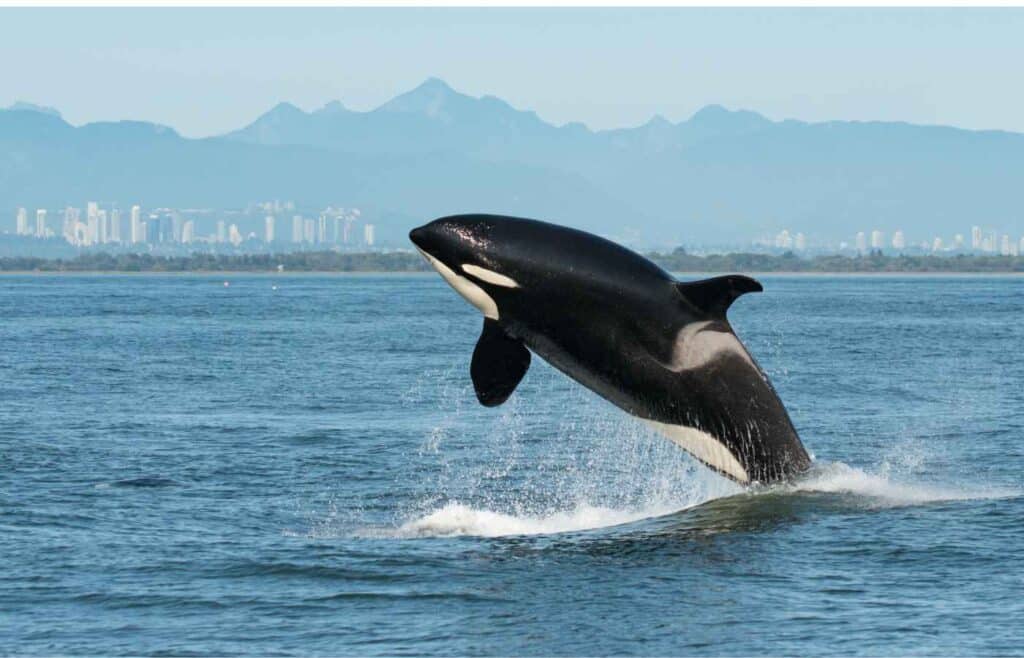
8. Narwhals, which are a type of toothed whale, feed on Arctic cod and squid in deep water beneath sea ice. They use echolocation to navigate and locate their prey.
9. Grey whales are bottom feeders. They use their mouths to suck up sediment from the ocean floor and filter out tiny animals like small crustaceans and worms. This unique feeding behavior is called “skimming,” where they swim along the bottom of the ocean with their mouths open to scoop up food.
10. Right whales are known for their unique feeding behavior called “skim feeding,” where they swim with their mouths open through the water, straining tiny organisms like copepods and krill through their baleen plates.
11. Humpback whales in the Southern Hemisphere live off their fat reserves for up to 7.5 months each year while they migrate.
Baby Whales
1. Most newborn whales are born tail first, which helps to protect their head and blowhole during birth.
2. Newborn whales are called “calves.”
3. The gestation period of a whale varies depending on the species, but it can range from about 9 to 18 months.
4. Calves drink their mother’s milk, which is very high in fat and helps them grow quickly.
5. Some whale calves can gain as much as 200 pounds (90 kilograms) per day.
6. A newborn blue whale calf can weigh as much as two adult elephants and be 25 feet (7.6 meters) long.
7. A baby whale is born with a layer of blubber that helps them stay warm in cold waters.
8. Humpback whale calves can nurse for up to a year, while blue whale calves can nurse for up to 8 months.
9. Some whale calves can swim within an hour of being born, while others take a few hours to get their bearings.
10. Whale mothers are very protective of their calves and will often swim between their calf and any perceived danger.
11. Some whale mothers will sing to their calves, a behavior known as “whispering,” which may help the calf learn its mother’s voice.
12. The bond between a female whale and her calf is very strong and can last for several years.
In comparison, rhino calves are also large at birth, but they grow up in a completely different environment. Learn more in Rhino Facts for Kids.
Narwhals
1. Narwhals are known for their long, spiral tusk that can grow up to 10 feet (3 meters) long.
2. This tusk is actually a tooth that grows through the whale’s upper lip and has sensory abilities that help the narwhal navigate its environment.
3. Narwhals are known as “unicorns of the sea” because of their unique tusk, and have been the subject of legends and myths for centuries.
4. Narwhals live in the Arctic and are one of the few whale species that live in the icy waters year-round.
5. They use their tusk to break through the ice to breathe.
6. Narwhals are a type of toothed whale, but unlike most other toothed whales, they have no teeth in their upper jaw.
7. Narwhals are social animals that travel in groups, or “pods,” of up to 20 individuals.
8. Narwhals have a unique feeding strategy where they use their tusk to stun fish before swallowing them whole.
9. Narwhals can dive to depths of over 5,000 feet (1,500 meters), making them one of the deepest-diving whales.
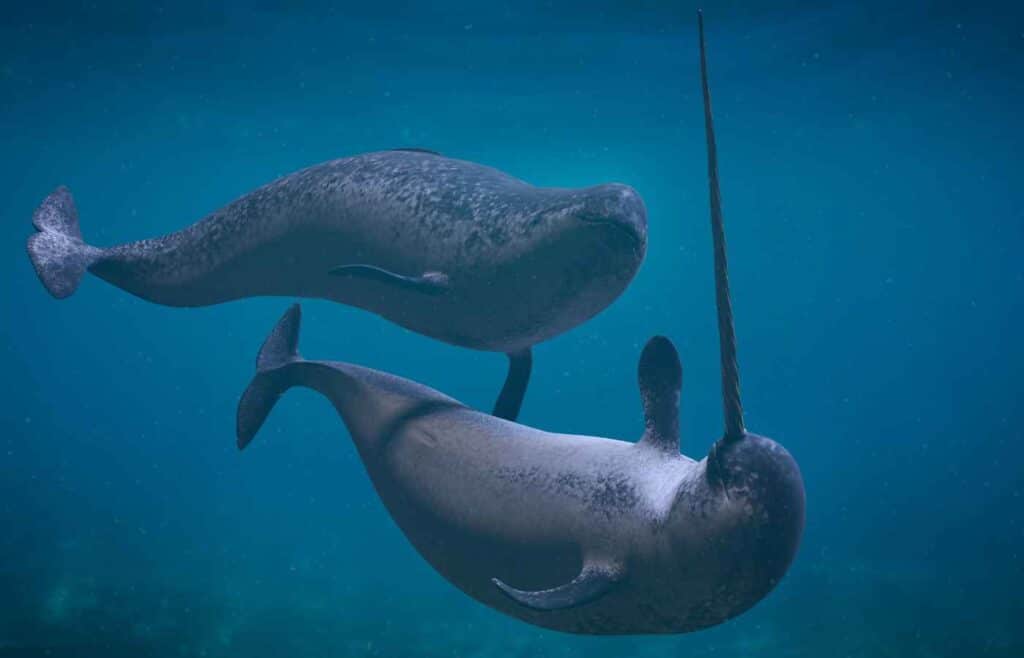
10. Narwhals can hold their breath for up to 25 minutes, which helps them survive in the icy Arctic waters.
11. Narwhals are known for their distinctive vocalizations, which include clicks, whistles, and pulsed calls.
12. Narwhals have a thick layer of blubber that helps them stay warm in the cold Arctic waters. This blubber can be up to 6 inches (15 centimeters) thick.
Killer Whales
Here are some surprising killer whale facts your kids will love:
1.Despite their name, killer whales are actually a type of dolphin, not a whale.
2. Killer whales are found in every ocean on Earth, from the Arctic to the Antarctic.
3. Killer whales are highly social animals that live in family groups called “pods.”
4. Killer whales are known for their intelligence and complex social behavior, and have even been observed working together to catch prey.
5. Killer whales are apex predators, which means they are at the top of the food chain in their habitat.
6. There are different types of killer whales, each with unique physical and behavioral characteristics.
7. Some killer whales have a diet that consists primarily of fish, while others feed on mammals like seals and even other whales.

8. Killer whales are known for their vocalizations, which include whistles, clicks, and calls that can be heard by other whales over long distances.
9. Killer whales are capable of traveling long distances – some populations migrate over 1,000 miles (1,600 kilometers) each year.
10. While killer whales are generally not a threat to humans, there have been rare instances of attacks on people in captivity.
Grey wolves also live in close-knit family groups called packs, where they rely on teamwork for hunting and survival. Read more in Grey Wolf Facts for Kids.
Beluga Whales
1. Beluga whales are sometimes called “sea canaries” because of their high-pitched vocalizations that sound like singing.
2. Beluga whales are able to turn their heads from side to side, unlike other whale species whose neck vertebrae are fused.
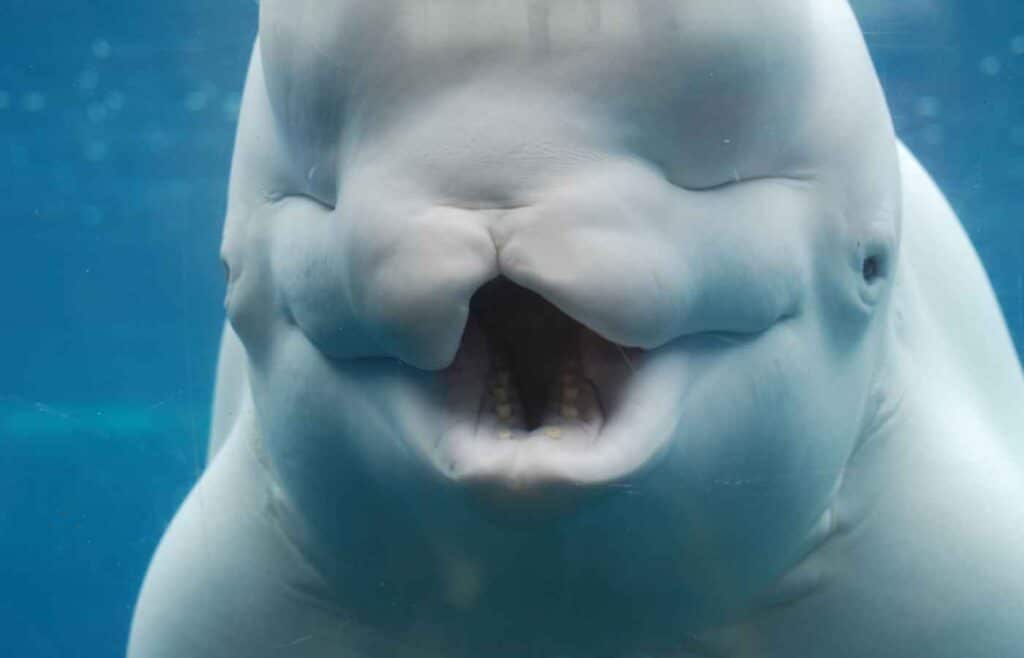
3. Beluga whales are one of the smaller whales, with adults measuring between 10-16 feet (3-5 meters) in length.
4. Beluga whales are social animals that live in groups called pods. Pods can range in size from just a few individuals to several hundred.
5. Beluga whales can swim backwards! This is a unique ability among whale species.
6. Beluga whales are the only whale species that can change the shape of their heads by manipulating their air sacs.
7. Beluga whales have a distinctive white coloration that helps them to blend in with their icy Arctic habitat.
8. Beluga whales have a lifespan of up to 50 years in the wild.
Similarly, piglets are known for their squeals and grunts, which they use to communicate with their mothers and siblings. Find out more in Piglet Facts for Kids.
Pilot Whales
1. Pilot whales have one of the strongest social structures of any cetacean species. They live in large pods that can consist of hundreds of individuals, and are often seen swimming close together and touching one another.
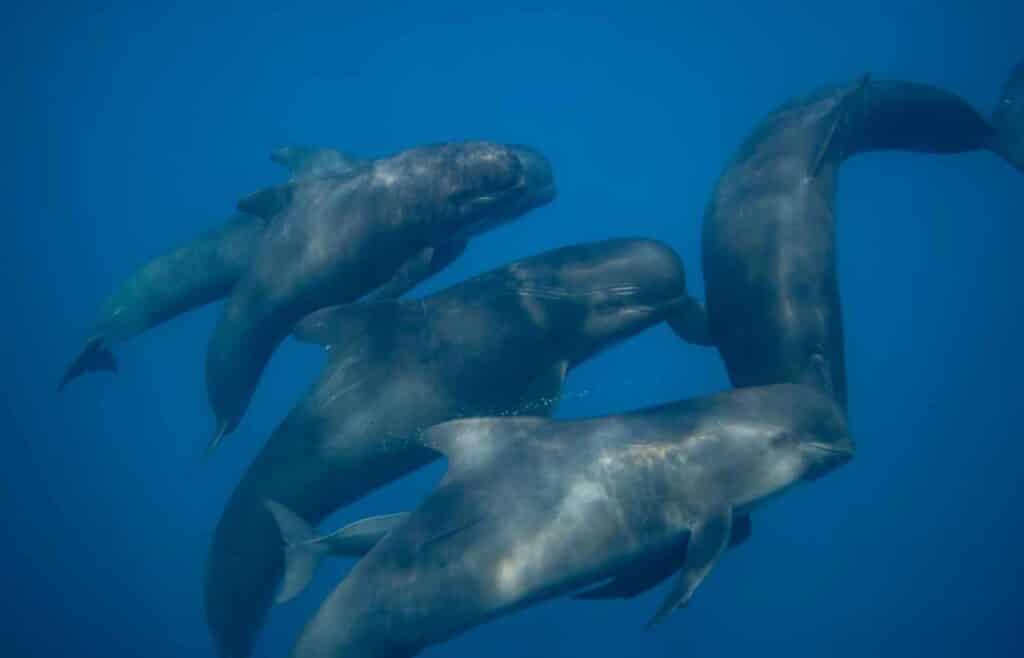
2. Pilot whales are unique in that they primarily eat squid, rather than the krill and small fish that most other baleen whales eat.
3. They are able to dive to great depths to catch their prey, and can stay underwater for up to 30 minutes at a time.
Minke Whales
1. The Minke whale is one of the smallest baleen whale species, growing to an average length of 25-30 feet (7.5-9 meters) and a weight of 5-10 tons.
2. Minke whales often feed by lunging at their prey from below.
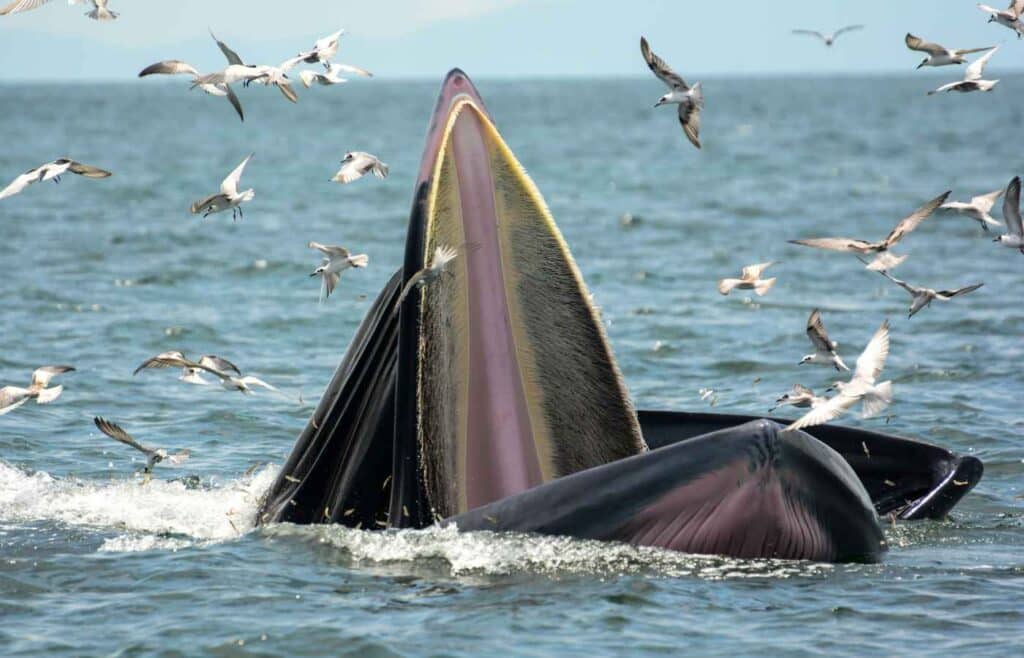
3. Minke whales are known for their relatively shallow dives, typically diving to depths of around 100-200 meters (330-660 feet) to feed.
4. Minke whales are one of the most widespread of all the whale species, found in all of the world’s oceans.
5. They are also one of the most abundant whale species, with a global population estimated to be around 500,000 individuals.
Endangerment
1. There used to be over 225,000 Antarctic blue whales. Today there are less than 3,000 remaining int he wild.
2. Some whale species are still hunted for their meat, blubber, and other body parts, despite conservation efforts to protect them.
3. Over 80% of North Atlantic right whales have been entangled in fishing gear at least once during their lifetime – they often get caught many times in their lives.
4. Climate change is affecting the ocean habitats of whales, causing changes in water temperature, acidity, and food availability.
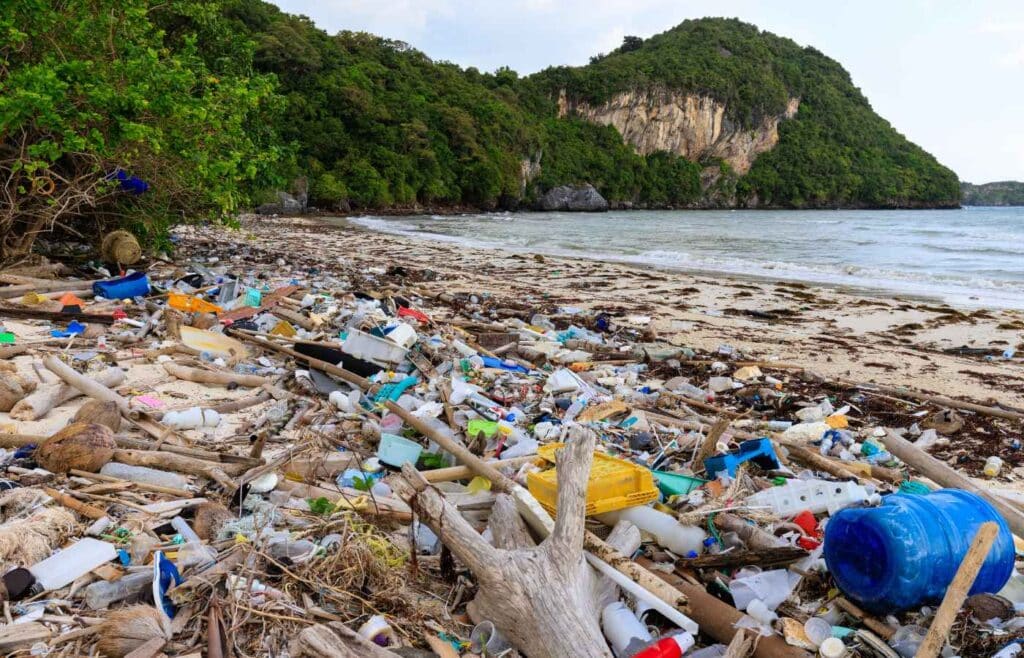
5. Noise pollution from ships, sonar, and other human activities can disrupt whale communication, navigation, and feeding behaviors.
6. Plastic pollution in the ocean is a major threat to whales, as they can mistake plastic debris for food or become entangled in it.
7. A study by the University of Bergen found that around 20% of the whales they examined had plastic debris in their stomachs.
8. Some whale species, such as the North Atlantic right whale, are critically endangered, with only a few hundred individuals left in the wild.
White tigers also face threats due to habitat loss and inbreeding in captivity. Learn about their unique story in White Tiger Facts for Kids.
How To Help
There are several ways that kids can help whales and their ocean habitat. Here are a few ideas:
- Reduce plastic use: Plastic pollution is a major threat to whales and other marine life. Kids can reduce their plastic use by using reusable water bottles, bringing reusable bags when shopping, and avoiding single-use plastic products like straws and utensils.
- Support conservation organizations: Kids can support organizations that work to protect whales and their habitat, such as the World Wildlife Fund, the Whale and Dolphin Conservation, and the Ocean Conservancy.
- Participate in beach cleanups: Kids can participate in beach cleanups to remove litter and debris from the shorelines that could potentially harm whales and other marine animals.
- Reduce water usage: Water conservation is important because excessive water usage can lead to lower river levels, which can negatively affect the ocean and the animals that live there. Kids can help by taking shorter showers, turning off the tap when brushing their teeth, and using a broom instead of a hose to clean outdoor areas.
- Spread awareness: Kids can also help by spreading awareness about whale conservation and the importance of protecting the ocean. They can share what they have learned with their friends and family, and encourage them to take action to protect the environment.
Conclusion
Whales are fascinating creatures that have captured the imaginations of people for centuries.
From their size and intelligence to their songs and behaviors, there is always something new and surprising to learn about these amazing animals.
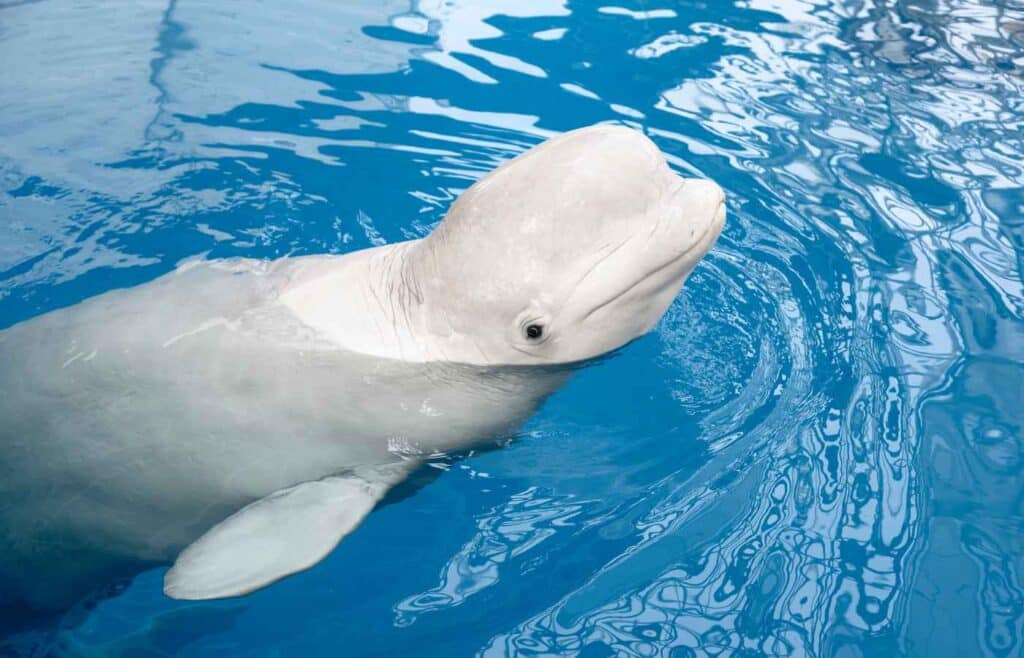
As we continue to study and appreciate whales, it is also important to remember that they are facing many challenges in today’s world, including habitat destruction, hunting, pollution, and climate change.
By learning about these issues and taking action to protect whales and their habitats, we can help ensure that these magnificent creatures continue to thrive for generations to come.
Let’s all do our part to protect and celebrate these incredible animals!
Sources:
Whale and Dolphin Conservation
American Cetacean Society
Smithsonian Ocean
Alaska Department of Fish and Game
National Geographic
National Oceanic and Atmospheric Administration
NOAA Fisheries
World Wildlife Fund
National Geographic Kids
MarineBio
Monterey Bay Aquarium
Science News for Students
Science Magazine
Live Science
International Whaling Commission
Ocean Conservancy
Related Posts
- 100 Amazing Shark Facts For Kids
- Sea Turtle Facts For Kids
- 100 Mind-Blowing Facts About Bottlenose Dolphins
- Monkey Facts for Kids
- Emperor Penguin Facts for Kids
- Piglet Facts for Kids
- White Tiger Facts for Kids
- Cheetah Facts for Kids
- Grey Wolf Facts for Kids
Calie Herbst, Editor-in-Chief of Milwaukee With Kids, has spent over a decade combining her experiences as a parent of three to create a hub for Milwaukee’s family adventures.
Her decade-long teaching career in Milwaukee Public Schools and academic background, including a Master’s in Teaching from Marquette University and dual B.A.s in Sociology and Spanish from the University of Wisconsin – Madison, fuel her passion for inclusive and engaging family content.
Calie is also a recognized voice in local media, contributing to WISN Channel 12 News, WTMJ Wisconsin Morning News, Fox 6’s Real Milwaukee, and B93.3.
Discover more about Calie’s journey and editorial approach on her About Page and Editorial Policy Page.


